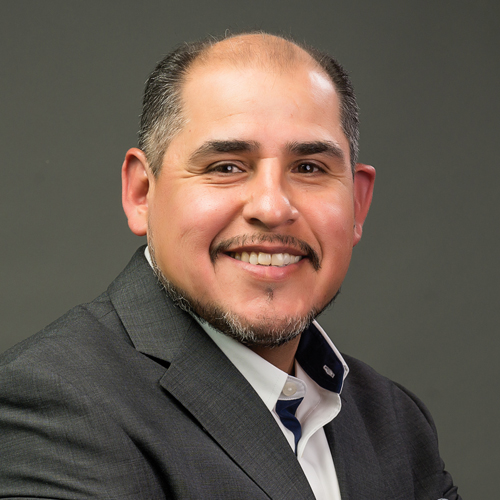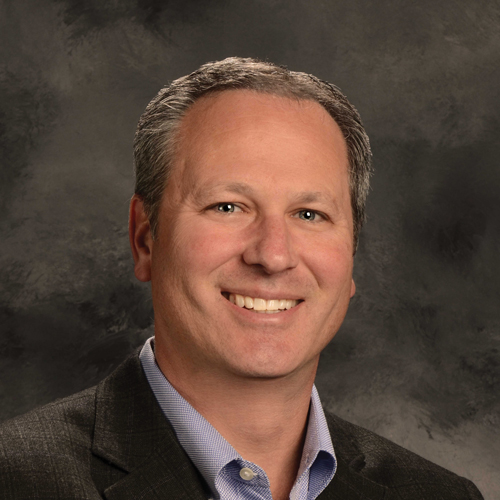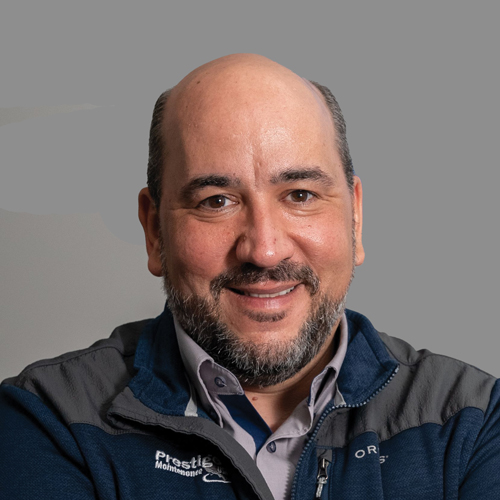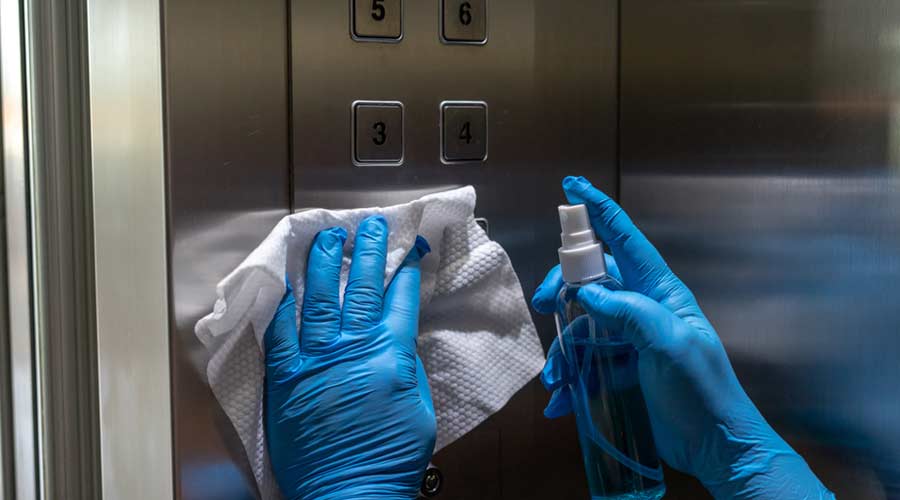
When it comes to commercial cleaning, there’s always a mess to clean up. For example, there can be short, medium, or long periods of financial uncertainty. Some years are slower while others can be an economic roller coaster — 2020 and 2021 being extreme examples.
In 2025, familiar employment issues that have dogged building service contractors (BSCs) for years — high turnover and rising wages — remain, while the industry also grapples with domestic and geopolitical issues.
The rapid evolution of products and equipment, and the fluid demands from facility clients also make keeping pace a challenge for BSCs.
No particular individual knows for sure how today’s hot topics will eventually shake out. However, the industry is blessed with an abundance of experienced and pragmatic minds that are capable of navigating rough storms just as they have before. That’s why Contracting Profits reached out to a trusted stable of expert sources to examine how they are operating under current conditions.

Steve Garcia
Vice President of Operations
Clean Team Inc.

Paul Greeland
Partner
Ikigai Management Consultants

Jason Dinverno
CXO, Managing Partner
Prestige Maintenance USA

Heather Parker
Vice President of Multi-Family Operations
CleanOffice/PorterPlus
The cleaning industry is known for its high turnover rate, and challenging political times have exacerbated the issue. What's the labor situation in your company and what are you doing to overcome it?
GARCIA: Labor will always be a challenge in our industry, as up to 80 percent of our workforce consists of entry-level cleaning positions. Our opportunities need to be tailored to first-time job seekers, retirees, and individuals seeking part-time work to supplement their income.
DINVERNO: Prestige Maintenance has not been immune to the struggle to attract and retain workers, especially with increased competition from other wage-sensitive sectors and a smaller pool of available job seekers. To overcome this, Prestige has worked at improving pay and benefits, strengthening onboarding and early engagement, using technology (apps, automation, training tools), and focusing on retention.
GREENLAND: My clients are all very concerned. Several have had 10 to 15 percent of their staff simply not show up for fear of U.S. Immigration and Custom’s Enforcement (ICE).
What are the three biggest challenges pertaining to hiring and retaining frontline workers today?
GREENLAND: The three biggest challenges are finding e-verified candidates, being able to raise wages in a fixed contract environment, and bilingual abilities for supervisors.
DINVERNO: Wage pressures and labor competition top the list, but lack of career path or advancement is a close second. Failure to meet productivity standards and job expectations rounds out the top three.
GARCIA: To attract and retain staff, it’s important to pay attention to pay rates, medical benefits, and holiday/paid time off (PTO) offerings, all while remaining competitive in the marketplace.
What retention/upskilling strategies do you have in place for your team and why do you think they are successful?
DINVERNO: To attract and retain frontline talent, we are committed to providing competitive pay, clear pathways for advancement, and a supportive work environment that prioritizes employee experience and adaptability.
GARCIA: Promotion from within is huge. People are drawn to companies that offer opportunities to move up. We have a growth model that allows for advancement. Incentives for hard work and recognition are also key.
GREENLAND: Internal training and skills expansion are great strategies. BSCs would also benefit from developing a leadership track for hourly staff.
How do you keep employees engaged?
DINVERNO: At Prestige Maintenance we strive to treat labor as a strategic investment— not just a cost, which helps us remain competitive and deliver consistent service. Our way of thinking is we are a “people company that happens to clean!”
GREENLAND: It’s all about good communication, promotion opportunities, and creating a culture of inclusion.
GARCIA: The team concept has worked great for us. Many of our employees work offsite in customer locations. We want to make sure we have well-trained site managers and leads who promote team values and acceptance.
Products and Technology
There's a lot of uncertainty surrounding tariffs, which could impact product/equipment availability moving forward. Have you made any adjustments or contingency plans in the event that you must pivot, and if so, what are they?
GARCIA: We’ve already seen some price increases on products and equipment due to recent tariffs. It’s like what happens when fuel prices go up; we’ve dealt with this before. I believe it will balance out over time, and most customers understand since they’re affected, too. If tariffs become a bigger issue, we’ll work with our customers on service and pricing adjustments.
GREENLAND: No adjustments as of yet. We are concerned about the cost of chemicals since most base materials come from Asia. We are concerned for the future of robotics. Almost all are from Asia currently.
DINVERNO: Yes, we’ve taken proactive steps to prepare for potential tariff-related disruptions. This includes diversifying suppliers, increasing inventory of key items, and exploring domestic sourcing options. We’re also staying closely aligned with our vendors to ensure flexibility and maintain service continuity if adjustments are needed.
Technology is changing at a rapid pace. How have automation and robotics impacted your offerings?
GARCIA: Robotics and automation are improving, but there’s still a long way to go. Right now, we’re seeing more impact from software technology, which is helping our company become more efficient and effective.
GREENLAND: Robots are so close to being commercially viable. In my analysis of adding robots to a cleaning routine, it begins to make economic sense when we can replace labor that costs $20 per hour. That’s when the return on investment (ROI) starts to make sense.
DINVERNO: While we are not currently deploying automation or robotics in our service delivery, we continue to evaluate these technologies as opportunities to align with client needs and operational goals. We're closely monitoring advancements in this space and remain open to implementation where it can enhance efficiency, consistency, or safety without compromising service quality or cost effectiveness.
What technologies do you think have the potential to improve your operations and why?
PARKER: In today’s business landscape many organizations are using software and applications that knowingly or unknowingly fall under the category of the Internet of Things (IoT). One of the key challenges in our industry is the physical distance between employers and employees. Implementing a robust IoT framework can help bridge this gap by enhancing communication, engagement, and operational efficiency.
GARCIA: Some of these technologies work well in the right situations, but ROI has to come first. It depends on whether the customer is willing to pay more, and some will if it makes sense. It can set you apart from the competition, especially in larger accounts, but in the end, the quality of the work matters most.
GREENLAND: Demand-generated cleaning gives BSCs the ability to understand exactly where tenants worked that day so that we only clean what needs to be cleaned. I also believe that engineered water should be able to replace a large percentage of other chemicals.
DINVERNO: As a janitorial service provider, we see strong potential in technologies like IoT sensors, robotics, and integrated software platforms to improve efficiency, responsiveness, and quality control. We're also interested in engineered water systems, such as electrolyzed or ozonated water, that support safety and sustainability. While not all are in use today, we continue to evaluate solutions that align with client needs and operational goals.
Do you use generative AI (such as ChatGPT) in your business, and if so, where is it most beneficial?
GARCIA: I think AI is a powerful tool that should be used carefully; it can be risky if it is misused. I’ve used it for training, scheduling, and graphic design, and it’s helped me save time on those tasks.
GREENLAND: Only in marketing. A big goal [of mine] for this summer is to learn how to use AI.
DINVERNO: We’ve begun exploring the use of generative AI tools, such as ChatGPT and Microsoft Copilot, to support internal functions like drafting communications, creating training materials, and streamlining documentation. While still in the early stages, we see strong potential for these tools to enhance administrative efficiency and improve responsiveness across the business.
PARKER: I find AI useful in refining client communication by ensuring tone, clarity, and professionalism are on point and boosting productivity, especially when creating documents, templates, or reports where standard formats can be reused and customized.
Has green cleaning and ESG (Environmental, Social, Governance) become commonplace in cleaning, or is this still a luxury driven either by cleaning professionals or building occupants?
GREENLAND: Green cleaning is the standard in the industry. No one should be doing anything else. ESG is just good business practice. Why wouldn’t a company care about the environment, our staff, customers, and how we operate as a fair company?
GARCIA: I think the term “Green Cleaning” has been overused and misunderstood. Everyone can claim to be “green” in terms of their service, but it seems to be gimmicky these days. The real consideration should always be the impact on our environment, the safe use of products by our staff, and the safety of the tenants we serve. ESG cleaning standards are here to stay and continue to grow.
PARKER: Looking ahead, the trajectory of ESG adoption will likely be shaped by the evolving political landscape. In 2025, the U.S. political climate has introduced significant shifts. Under the current administration, several executive orders have rolled back federal support for Diversity, Equity, and Inclusion (DEI) and ESG-related mandates. At the same time, many CEOs and corporations continue to prioritize climate risk and sustainability due to increasing environmental challenges and stakeholder expectations.
DINVERNO: Green cleaning and ESG initiatives are no longer considered a premium feature — they're becoming an expectation. While early adoption was often driven by environmentally conscious occupants, today's demand is shaped by broader corporate commitments to sustainability and social responsibility.
What’s also helped accelerate this shift is that suppliers of equipment, chemicals, and other cleaning solutions have stepped up, offering green alternatives that are not only effective but also competitively priced and no longer cost-prohibitive. This has made it significantly easier for cleaning providers to integrate sustainable practices without sacrificing operational efficiency or budget.
BSCs Weigh in on Current and Future Industry Trends

 Celebrating BSCAI's 60th Anniversary eBook
Celebrating BSCAI's 60th Anniversary eBook The Down and Dirty on Cleaning in Virus Season
The Down and Dirty on Cleaning in Virus Season How Surfactant Use is Expanding in Commercial Cleaning
How Surfactant Use is Expanding in Commercial Cleaning